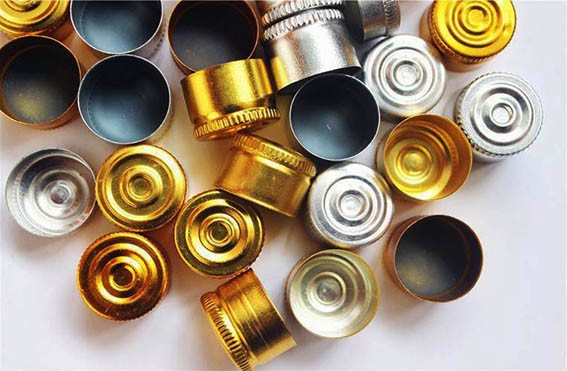How does the bottle cap seal (aluminum cap) ensure the sealing performance of the vial?
Last Updated :Apr. 10, 2024
Vials are widely used pharmaceutical sealed containers in the pharmaceutical field. They generally consist of three parts: a vial, a rubber stopper, and an aluminum cap. There are many reasons that affect the sealing performance of vials. Whether the aluminum material of the aluminum cap meets the hardness index we require, whether the hardness of the rubber stopper is soft or hard, whether the angle and thickness of the bottle mouth are designed reasonably, etc.
The bottle cap seal (aluminum cap) is one of the reasons that affects the sealing performance of the vial. If the depth of the aluminum cap is too high and the aluminum material is too hard, it will affect the sealing performance of the vial.

Factors affecting the sealing performance of vials
- A. Depth of the aluminum cap: The depth of the aluminum cap plays a vital role in determining the sealing performance of the vial. If the depth of the cover is too high, excessive aluminum extrusion may occur during the sealing process, causing skirts or wrinkles to form. This compromises the integrity of the seal and increases the risk of contamination.
- B. Hardness of aluminum material: The hardness of the aluminum material used to make bottle caps is another key factor affecting sealing performance. If the aluminum is too hard, excessive pressure will be applied during the capping process, resulting in lace and wrinkles on the rolled edge of the cap. Conversely, if the material is too soft, it may not provide an adequate seal, causing the lid to crack or skirt to form.
- C. Bottle mouth design: The design of the bottle mouth, including its angle and thickness, plays an important role in achieving optimal sealing performance. A properly designed bottle finish ensures even distribution of pressure during the capping process, minimizing the risk of cap deformation or leakage.
- D. Rubber plug performance: The hardness and elasticity of the rubber plug will also affect the sealing performance. Soft stoppers or improperly sized stoppers may not form a tight seal against the vial mouth, compromising the integrity of the closure system.

Optimization strategy for bottle cap sealing
- A. Material selection: Selecting the right aluminum material with the required hardness and ductility is critical to optimizing sealing performance. Rigorous quality control testing is performed to ensure compliance with predefined specifications, helping to prevent problems such as broken caps or skirting.
- B. Process Optimization: Fine-tuning capping process parameters, such as capping speed, torque and pressure, helps achieve consistent, reliable sealing performance. The use of advanced capping equipment equipped with real-time monitoring and feedback mechanisms can enhance process control and minimize sealing defects.
- C. Quality Assurance Measures: Implementing strong quality assurance measures throughout the manufacturing process, including incoming material inspection, process monitoring and final product testing, is critical to ensuring the integrity of the cap seal. Regular audits and compliance checks can help identify and resolve any deviations from established quality standards.
- D. Continuous Improvement: Embracing a culture of continuous improvement and innovation is critical to keeping up with emerging trends and technologies in vial sealing. Investing in R&D programs designed to enhance seal design, materials and manufacturing processes can significantly improve seal performance and product quality.
The sealing performance of pharmaceutical bottles is a key factor that directly affects product quality, safety and regulatory compliance. Among the various components of the vial sealing system, the cap seal, especially the aluminum cap, plays a key role in ensuring tightness and preventing contamination. Understanding the complex interplay of factors that influence seal performance, such as cap depth, aluminum material hardness, rubber seal properties and finish design, is critical to optimizing seal integrity. By implementing strategic optimization strategies and quality assurance measures, pharmaceutical manufacturers can achieve consistent and reliable seal performance to safeguard the efficacy and safety of their pharmaceutical products.



